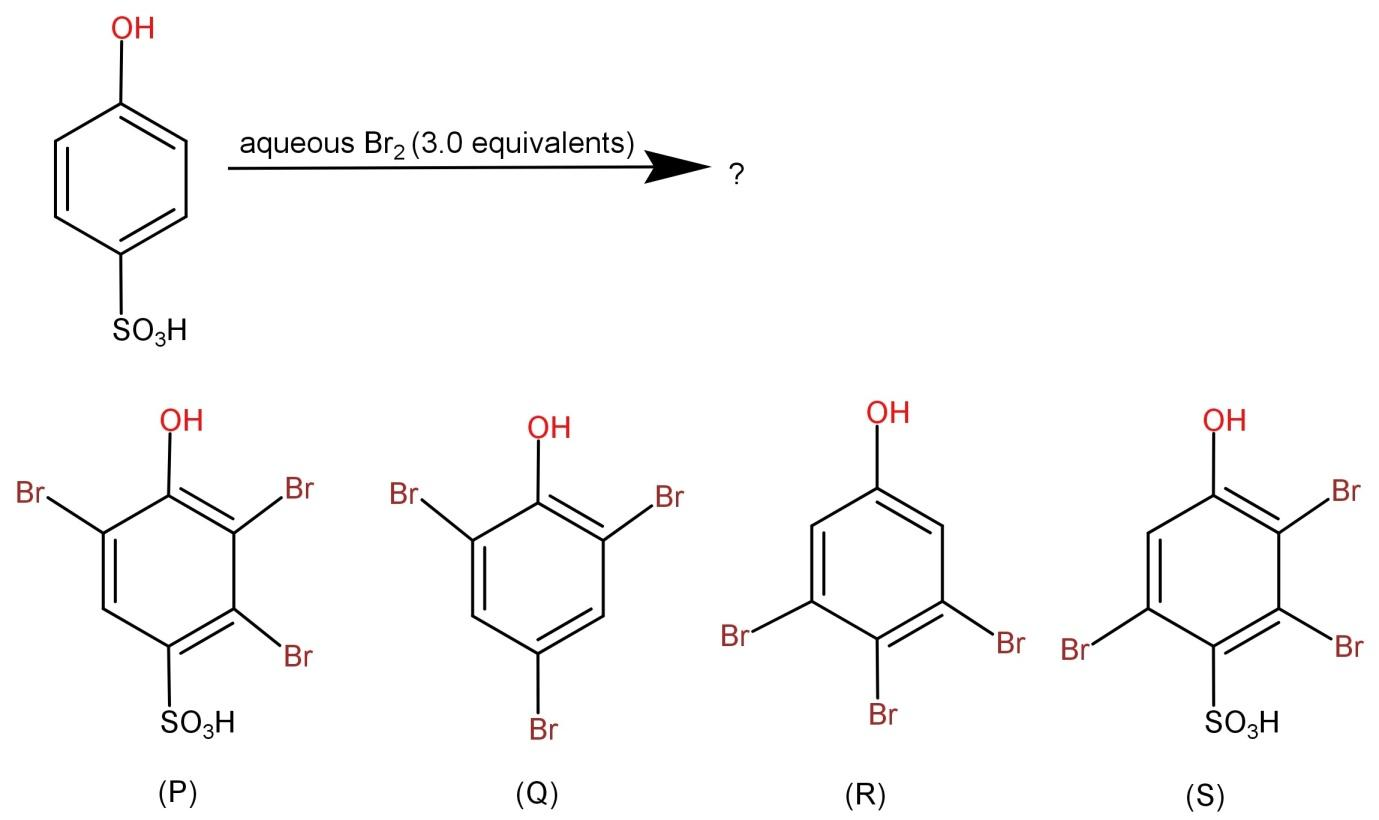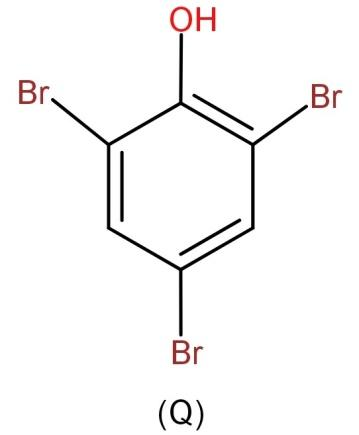
The major product (s) of the following reaction is (are):


Answer
504.3k+ views
Hint: The hydroxyl group (-OH) is ortho and para directing while the sulfonyl group (
Complete step by step answer:
-First of all let us see the reactant and the nature of groups attached to it.
The given reactant in the question has 2 groups: a hydroxyl group (-OH) and sulfonyl group (
-When the reactant reacts with aqueous bromine, there occurs electrophilic substitution reaction and the hydroxyl group (phenoxide ion) in the aqueous solution becomes extremely reactive.
-First the bromine reacts with the ring and bromine atoms get attached to both the ortho and para position. The para position is shared by a bromine atom and the sulfonyl group and the carbon at the meta position has a positive charge (electrophilic carbon). Next the sulfonyl group being a good leaving group leaves the para position where the bond gets transferred to the ring. Hence the final product formed is: 2,4,6-tribromophenol and it is a white ppt.
In short we can say that the sulfonyl group (
-The reaction occurs in the following manner:

-Hence, we can say that the major product is 2,4,6-tribromophenol.

So, the correct answer is “Option Q”.
Note: A leaving group is basically a group or a molecule which leaves easily along with a pair of electrons from a heterolytic bond cleavage. They can be anions, cations or even neutral molecules. Basically the weak bases are the best leaving groups. For example: halide ions like
Complete step by step answer:
-First of all let us see the reactant and the nature of groups attached to it.
The given reactant in the question has 2 groups: a hydroxyl group (-OH) and sulfonyl group (
-When the reactant reacts with aqueous bromine, there occurs electrophilic substitution reaction and the hydroxyl group (phenoxide ion) in the aqueous solution becomes extremely reactive.
-First the bromine reacts with the ring and bromine atoms get attached to both the ortho and para position. The para position is shared by a bromine atom and the sulfonyl group and the carbon at the meta position has a positive charge (electrophilic carbon). Next the sulfonyl group being a good leaving group leaves the para position where the bond gets transferred to the ring. Hence the final product formed is: 2,4,6-tribromophenol and it is a white ppt.
In short we can say that the sulfonyl group (
-The reaction occurs in the following manner:

-Hence, we can say that the major product is 2,4,6-tribromophenol.

So, the correct answer is “Option Q”.
Note: A leaving group is basically a group or a molecule which leaves easily along with a pair of electrons from a heterolytic bond cleavage. They can be anions, cations or even neutral molecules. Basically the weak bases are the best leaving groups. For example: halide ions like
Latest Vedantu courses for you
Grade 11 Science PCM | CBSE | SCHOOL | English
CBSE (2025-26)
School Full course for CBSE students
₹41,848 per year
Recently Updated Pages
Master Class 12 Economics: Engaging Questions & Answers for Success

Master Class 12 Maths: Engaging Questions & Answers for Success

Master Class 12 Biology: Engaging Questions & Answers for Success

Master Class 12 Physics: Engaging Questions & Answers for Success

Master Class 12 Business Studies: Engaging Questions & Answers for Success

Master Class 12 English: Engaging Questions & Answers for Success

Trending doubts
Which are the Top 10 Largest Countries of the World?

a Tabulate the differences in the characteristics of class 12 chemistry CBSE

Why is the cell called the structural and functional class 12 biology CBSE

Differentiate between homogeneous and heterogeneous class 12 chemistry CBSE

Derive an expression for electric potential at point class 12 physics CBSE

What are the major means of transport Explain each class 12 social science CBSE




